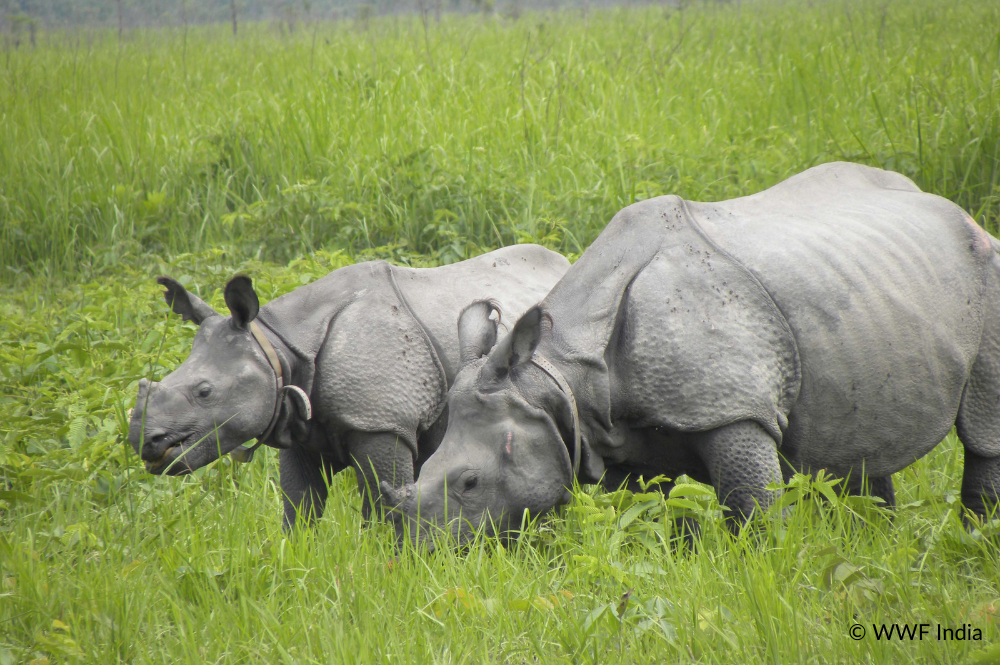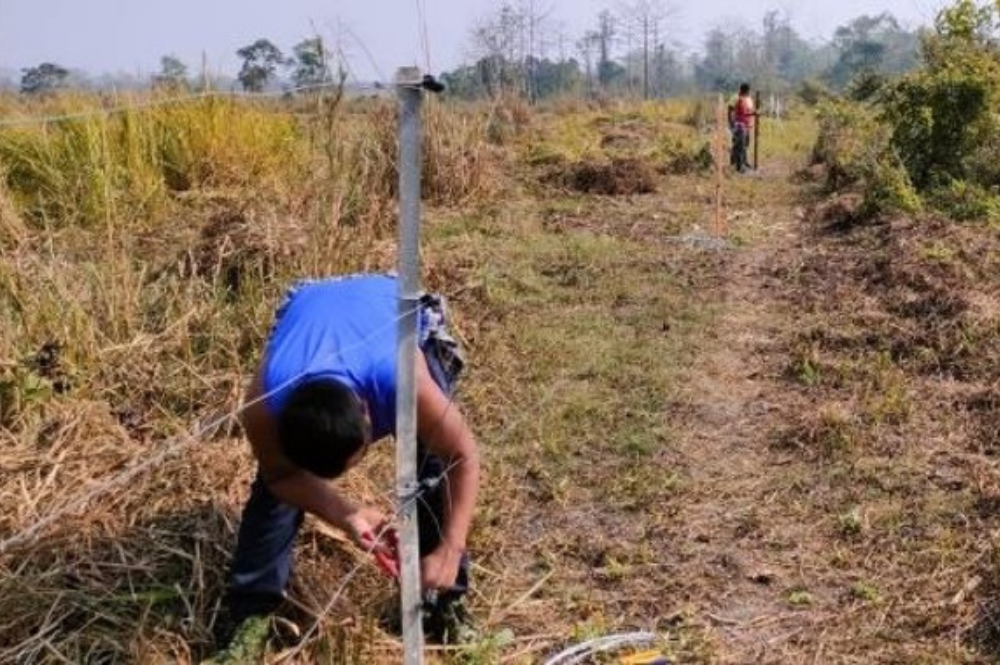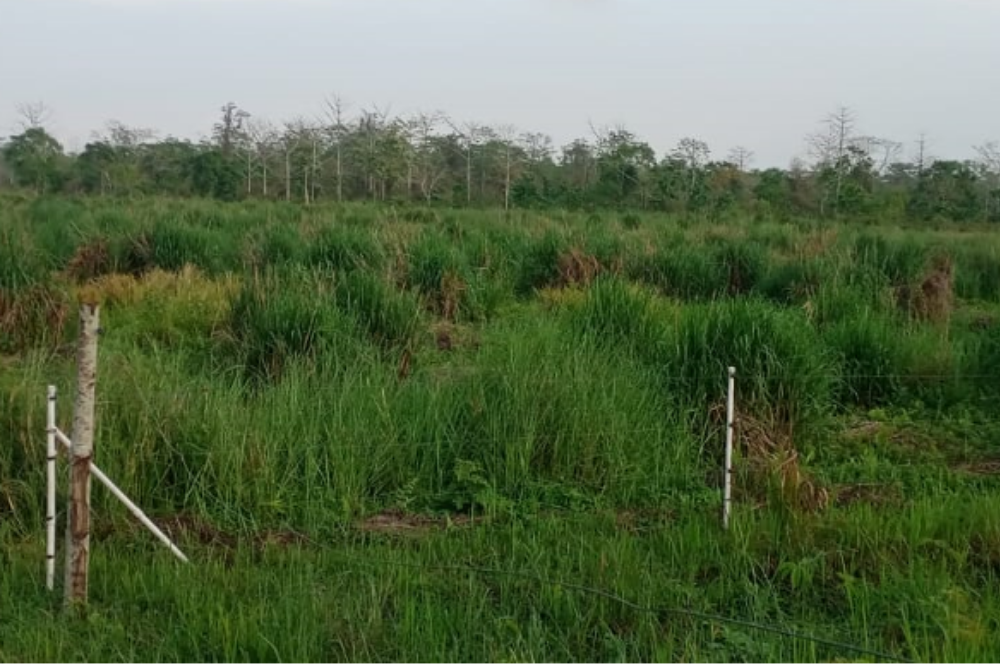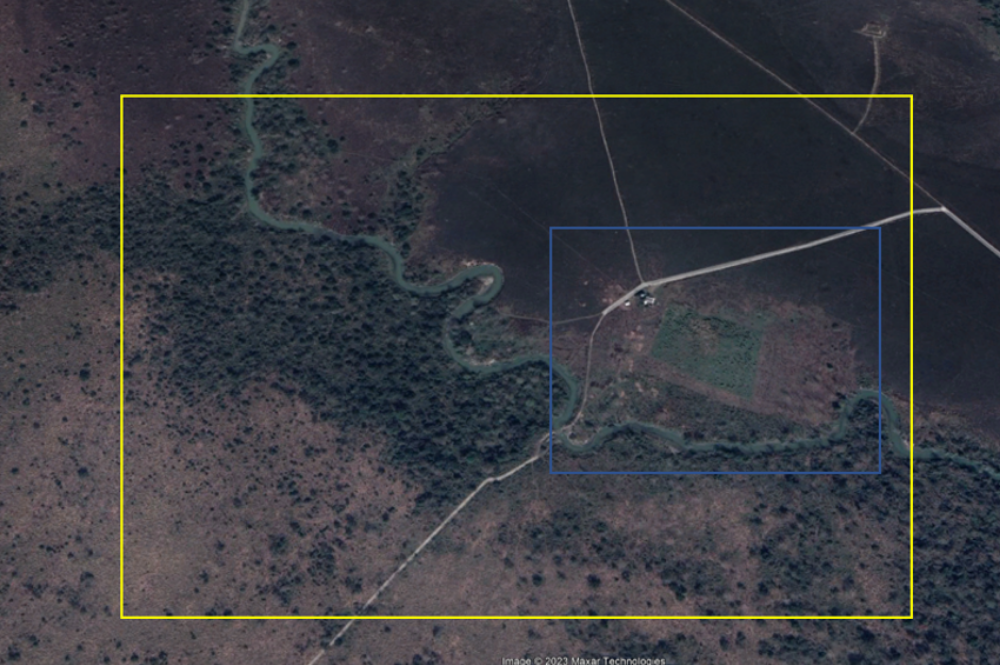The State of Assam, in north-east India, is a special place. Famous for its green, rolling landscape, and with the Brahmaputra River running through it, the region is said to be one of the richest biodiversity zones in the world. So, it makes sense that rhinos thrive in Assam: more than 2,800 of the world’s 4,000 Greater one-horned rhinos live in the State. Yet, when growing rhino populations require more healthy, connected and secure spaces, there are many challenges.
Increasing from a population of fewer than 200 at the turn of the 20th Century, long-term conservation interventions have made a huge impact on the Greater one-horned rhinos of Assam. However, the majority of these rhinos live in one place: Kaziranga National Park, a protected area just south of the Brahmaputra River. As their population has risen, finding areas for rhinos to expand into has been crucial.
Across the river and to the north-wast of Kaziranga lies Manas National Park, a biodiversity hotspot covering more than 500 km2. Previously part of the Greater one-horned rhino range (until local extinction in the 1990s), Manas has rich, alluvial grasslands and dense forests. Perfect for rhinos, reintroductions back into the Park began in 2008 as part of Indian Rhino Vision 2020. However, a park that’s ideal for rhinos (and other threatened wildlife such as tigers and pygmy hogs) is often perfect for non-native species too.
Invasive plants, such as Siam weed (Chromolaena odorata) and Bitter vine (Mikania micrantha) thrive in Manas, choking out native plants and limiting the food available for rhinos. In total, it’s estimated that up to one-third of the grassland habitat in Manas National Park has been taken over by invasive plant life. Working with our partner, the International Rhino Foundation, the Government of Assam, the Assam Forest Department, local NGO Aaranyak and more than 200 people from surrounding communities, we have supported the removal of these invasive species.
Last year, thanks to generous donors, our grants helped to uproot invasive plants within a 2 km2 area. In addition to the invasive species removal, approximately 200 trees were girdled (a process in which the tree bark is stripped and the tree dies). Without this process, the trees cause woody plant encroachment, disturbing the soil and destroying native plants, which reduces the food and habitat available for rhinos. Thanks to this work, invasive species in the restoration plot decreased by 90%.
With more protection and restoration efforts across Manas, we hope that more rhinos can move into these healthy, secure spaces. Nourished by the rich grasslands and with enough space to roam, the rhinos can breed successfully and boost their numbers, not only in Manas but in other habitats, too.
Our huge thanks to the incredible donors that have supported habitat restoration in Manas National Park, including Rotterdam Zoo, Parc Animalier et Botanique de Branféré, and the Scott and Jessica McClintock Foundation.
Help us continue to make a difference for Greater one-horned rhinos and other rhino species. Donate now to have an impact.














